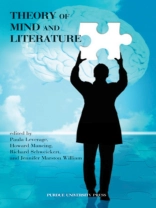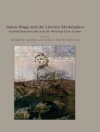Theory of Mind is what enables us to ‘put ourselves in another’s shoes.’ It is mindreading, empathy, creative imagination of another’s perspective: in short, it is simultaneously a highly sophisticated ability and a very basic necessity for human communication. Theory of Mind is central to such commercial endeavors as market research and product development, but it is also just as important in maintaining human relations over a cup of coffee. Not surprisingly, it is a critical tool in reading and understanding literature, which abounds with characters, situations, and ‘other people’s shoes.’ Furthermore, it is becoming increasingly apparent that reading literature also hones these critical mindreading skills.
Theory of Mind and Literature is a collection of nineteen essays by prominent scholars (linguists, cognitive scientists, and philosophers) working in the cutting-edge field of cognitive literary studies, which explores how we use Theory of Mind in reading and understanding literature.
表中的内容
Acknowledgments
Introduction
1: Theory of Mind Now and Then: Evolutionary and Historical Perspectives
Theory of Mind and Theory of Minds in Literature, by Keith Oatley
Social Minds in
Little Dorrit, by Alan Palmer
The Way We Imagine, by Mark Turner
Theory of Mind and Fictions of Embodied Transparency, by Lisa Zunshine
2: Mind Reading and Literary Characterization
Theory of the Murderous Mind: Understanding the Emotional Intensity of John Doyle’s Interpretation of Sondheim’s
Sweeney Todd, by Diana Calderazzo
Distraction as Liveliness of Mind: A Cognitive Approach to Characterization in Jane Austen, by Natalie Phillips
Sancho Panza’s Theory of Mind, by Howard Mancing
Is Perceval Autistic?: Theory of Mind in the
Conte del Graal, by Paula Leverage
3: Theory of Mind and Literary / Linguistic Structure
Whose Mind’s Eye? Free Indirect Discourse and the Covert Narrator in Marlene Streeruwitz’s
Nachwelt, by Jennifer Marston William
Attractors, Trajectors, and Agents in Racine’s “Récit de Théramène”, by Allen G. Wood
The Importance of Deixis and Attributive Style for the Study of Theory of Mind: The Example of William Faulkner’s Disturbed Characters, by Ineke Bockting
4: Alternate States of Mind
Alternative Theory of Mind for Artificial Brains: A Logical Approach to Interpreting Alien Minds, by Orley K. Marron
Reading Phantom Minds: Marie Darrieussecq’s
Naissance des fantômes and Ghosts’ Body Language, by Mikko Keskinen
Theory of Mind and Metamorphoses in Dreams:
Jekyll & Hyde and
The Metamorphosis, by Richard Schweickert and Zhuangzhuang Xi
Mother/Daughter Mind Reading and Ghostly Intervention in Toni Morrison’s
Beloved, by Klarina Priborkin
5: Theoretical, Philosophical, Political Approaches
Changing Minds: Theory of Mind and Propaganda in Egon Erwin Kisch’s
Asien gründlich verändert, by
Seth Knox
Functional Brain Imaging and the Problem of Other Minds, by Dan Lloyd, Vince Calhoun, Godfrey Pearlson, and Robert Astur
How is it Possible to Have Empathy? Four Models, by Fritz Breithaupt
Theory of Mind and the Conscience in
El casamiento engañoso, by José Barroso Castro
Contributors
Index
关于作者
Paula Leverage is associate professor of French and medieval studies, and director of the Center for Cognitive Literary Studies at Purdue University.
Howard Mancing is professor of Spanish at Purdue University.
Richard Schweickert is professor of psychological sciences at Purdue University
Jennifer Marston William is associate professor and chair of German at Purdue University.












